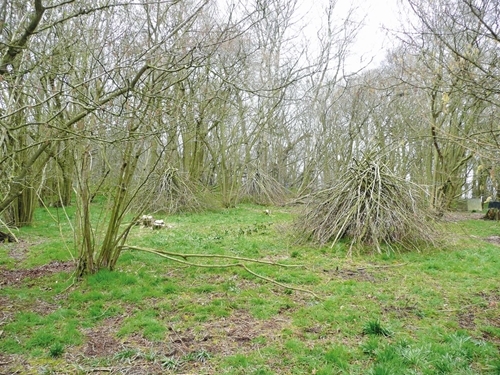
Allerton Project Shoot, Loddington
Work is underway to manage our woodlands so that they benefit game and wildlife. Thinning, ride widening, scalloping and glade creation will be our focus and with this will come regeneration of the understorey which is a favourite nesting place for migratory warblers. For the second year our lowland research team have been catching hen pheasants under Natural England licence, fitting radio-tags and then monitoring them to help find answers to the poor breeding performance of left-over released and wild pheasants.
We continue to supplementary feed using more than 100 hoppers to maintain the condition of our gamebirds. The availability of food through this hungry gap is also much appreciated by the Allerton Project’s songbirds. Matt Coupe and Austin Weldon would like to thank all the guns who joined us through the season. Your support ensures we can continue to run this fabulous demonstration of what good game management can deliver in the wider countryside.
Rotherfield Shoot
More than 200 hoppers have been moved to hedgerows and nesting areas and will be in use into May. During this time, feeding sites will be checked for signs of rats. March is the time to cull roe does and
late March/early April is when we carry out game counts, but the winter rape is already past knee height and starting to flower.
April is spent corvid trapping and making sure all tunnel traps are checked and ready for the main predation control months of May to July, before getting the pens ready in August for the 600 (tagged) cock pheasant poults we have each season.
GWSDF Auchnerran Shoot
The farm has successfully entered the Agri-Environment Climate Scheme, so we will be almost doubling our efforts this year and establishing six plots which will include: three Highland Mixes (triticale, barley, oats, wheat, rye, fodder radish and linseed); two Alba Mixes (triticale, barley, fodder radish, King’s kale rape, Vittasso brown mustard, Utopia and phacelia) and one Species Rich Grassland Restoration (highland bentgrass, crested dog’s-tail, slender creeping fescue, smooth stalked meadow grass, yarrow, meadowsweet, lady’s bedstraw, oxeye daisy, selfheal and yellow rattle).
Thank you to Frontier Agriculture and Kings Crops for their support. Winter feeding continues through this ‘hungry gap’ and predator control has increased for the breeding season. The farm is lucky to have wild game managers working tirelessly to control predators around the peripheries of the grouse moor, helping to conserve the abundant waders, wild game and other wildlife who find refuge here.